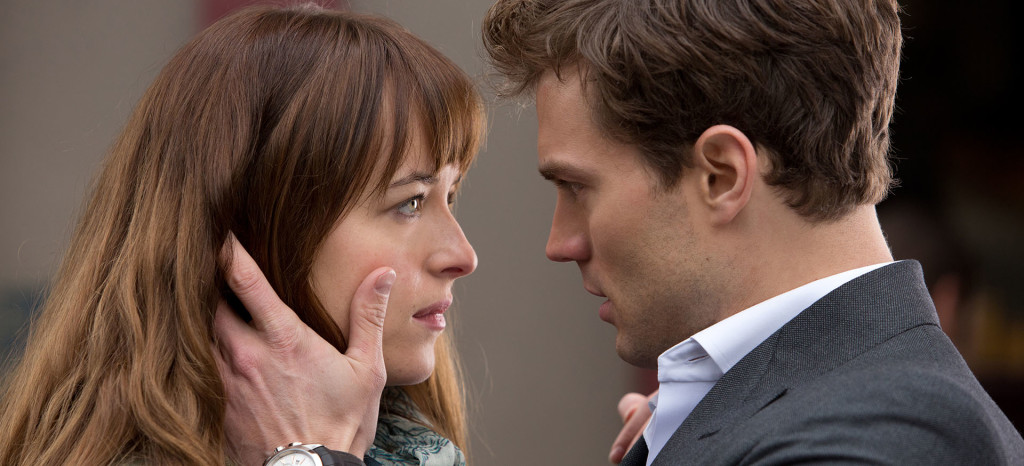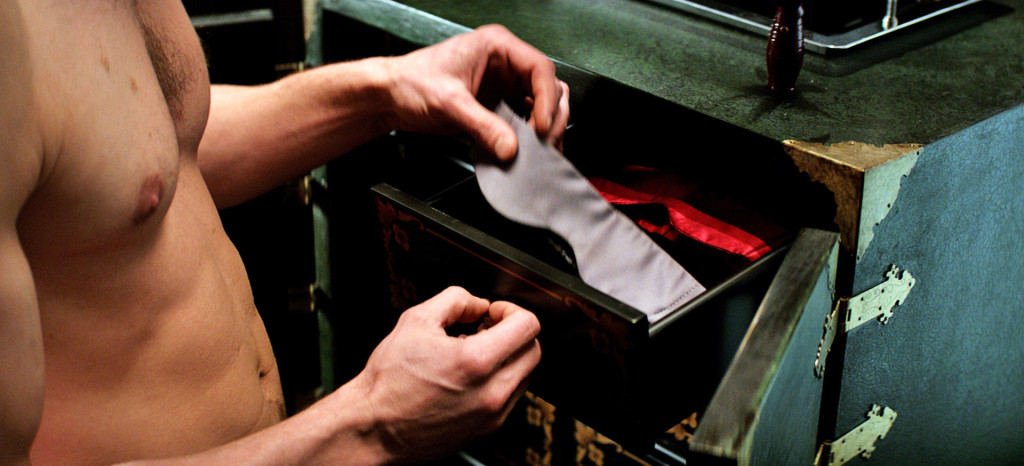Often stigmatized and associated with images of tight, leather suits and painful instruments, Bondage and Discipline, Dominance and Submission and Sadism and Masochism (BDSM), is commonly depicted as the stuff of dark sexual fantasies which only the most twisted individuals can enjoy. It is rare to see BDSM portrayed in media, and even less so on the big screen—which is why “Fifty Shades of Grey” is causing such a stir.
The cinematography is undeniably lovely and shows gorgeous scenes of downtown Seattle at its rainy best: the Space Needle complete with a 12th Man flag and a white-marble-adorned penthouse overlooking the city, complete with a black grand piano and views of the ferris wheel. Unfortunately, those breathtaking scenes and Beyoncé’s heart-stopping rendition of “Crazy in Love” may be the only enjoyable aspects of the movie.
Based on the erotic romance novel of the same name by E. L. James, “Fifty Shades of Grey” follows the journey of Anastasia Steele (Dakota Johnson), a timid senior at Washington State University Vancouver, as she’s lured into the world of BDSM by Christian Grey (Jamie Dornan), a powerful multimillionaire CEO with a thing for nice cars and whips.
The two meet in Grey’s top-floor office when Steele conducts an interview for her flu-ridden journalist roommate. Steele is immediately captivated by Grey’s intimidating and mysterious presence, which Grey notices. This marks the beginning of his aggressive, sexually-inlclined pursuit of the young Steele.
After signing a contract of non-disclosure, Steele learns Grey’s true intentions: a relationship in which Steele, the submissive, surrenders sexually to Grey, the dominant. Grey attempts to persuade her to sign a contract that outlines the conditions of their dominant/submissive relationship dynamic and they subsequently enact some untitillating softcore porn scenes. Grey becomes Steele’s sugar daddy of sorts, supplying her with new clothes, a laptop and a car and taking her out for exciting plane and helicopter rides.
While clearly charmed by his money and looks, Steele has reservations about committing to such a relationship. She isn’t enthusiastic about following certain rules that Grey has set up, like strict dietary restrictions, and she wants more out of the relationship than just sex. Eventually, out of frustration, she asks Grey what would happen if she received “the worst”—the harshest punishment Grey would give Steele for disobeying him. After a beating that leaves Steele in tears, she realizes that they are not compatible and the movie reaches an anti-climactic end with Steele leaving his apartment.
Grey delivers his lines—especially the ones that were meant to be funny and or “dirty”—poorly, which resulted only in forced awkward chuckles from the audience. But besides the issue of poorly delivered lines, lack of character development and unexciting sex scenes that showed way too much breasts and no penis (despite the movie being marketed towards women), this movie screwed up on too many other levels.
Firstly, it romanticized unhealthy relationships.
“[Healthy relationships are] grounded in communication and consent,” said senior women and gender studies and political science double major Kristen Wieliczka. “I think it’s a lot of dialogue, it’s a lot of communication, and it’s a lot of trust.”
Wieliczka is the co-president of Seattle University’s Society of Feminists, a student club that aims to create a safe space for dialogue about feminism. She emphasized that there are a multitude of feminists who identify with different types of feminism, and she is no way a spokesperson for SoF.
If healthy relationships are grounded in communication and consent, then Steele and Grey’s dynamic fails from the get-go.
Grey exhibited stalker-like tendencies, appearing at Steele’s workplace, in her home and all the way in Georgia, where Steele was visiting her mother, without prior communication. Consent was also violated in at least three instances—when Grey used a GPS tracker to find Steele at a bar, when he undressed her while she was too inebriated to make decisions and when he replaced her old Volkswagen with a shiny red car without telling her. Not to mention, every man Steele interacted with filled Grey with paranoia.
“Being able to talk to each other about both things sexual and not sexual, being comfortable with each other, and, of course, consent is a major must-have in a relationship,” said freshman English major SoF member Mackenzie Reed.
Comfort and lack of communication were both major issues in Steele and Grey’s relationship. He refused to let her touch him in any romantic way outside of sex. Grey also dismissed Steele’s requests to find out whom he was with and what matters were worrying him at work, despite Grey insisting on knowing every detail occurring in Steele’s life.
What’s even more troubling is that this romanticization was facilitated by using the label of BDSM, when in fact BDSM relationships, like all other healthy relationships, are about being safe, sane and consensual.
“You can have a healthy relationship and either be in a BDSM relationship or in the BDSM community,” Wieliczka said. “[The movie] teaches you what not to do.”
The common conception of BDSM as a taboo that does not occur in “normal” relationships is false. BDSM relationships can be as loving as any other relationship, and the sexual encounters, known as “scenes” in the BDSM community, usually have a definite start and end and communication of the safe word beforehand. The power in the relationship is equal, despite terms such as dominant and submissive possibly suggesting otherwise.
“The dominant must communicate to the submissive just as much as the submissive must communicate to the dominant,” Wieliczka said.
Seattle U communications professor Gary Atkins teaches gender studies courses and has had members of the BDSM community come in and speak to his Sex, God and Free Speech class. He also spoke about the stereotype of the dominant in a BDSM relationship having all the power.
“Quite often in the BDSM community, it is the woman who is the dominant and the man who the submissive,” Atkins said. “There is a clear sense of trust and both are still equal partners.”
Atkins added that he sees the roles of submissive and dominant as very normal roles within human relationships, whether in the work place or in a sexual or nonsexual way.
“Playing with that kind of energy, I think you learn a lot about yourself,” Atkins said. “You learn a lot about expressing different energies, performing different roles. I see that as the value of the notion of dominant and submissive and in the terms of BDSM.”
For those who are unfamiliar with BDSM, the portrayal of abuse and obvious power difference as being normal in a BDSM relationship could paint a bad image of the entire community.
In the movie, Steele wonders why Grey is “like this,” and why he feels the need to punish and hurt Steele during scenes. Grey is portrayed as a dark, brooding character and he justifies his desires by claiming he had a rough start in life and that his mother was a crack addict and a prostitute.
“I think it might maintain a stereotype of the BDSM community to suggest that you are only interested in it because you had an abusive childhood,” Atkins said.
To market one of the main characters as having a tormented past could imply that those who are interested in BDSM must be psychologically damaged in some way, which is not always true.
While the movie could have negative impacts on how the BDSM community is viewed, many people understand the absurdity of the movie.
“To be honest I didn’t take the movie that seriously,” said junior journalism major Danielle Calubaquib. She added that the strange plot progression and that it being plain “bad” prevented any influence on her perception of what a BDSM relationship is like.
This brings to question why, despite all its downfalls, “Fifty Shades of Grey” has become such a phenomenon. The book, which origins stem from “Twilight” fan fiction, sold over 100 million copies worldwide. The movie adaptation released last Friday picked up $81.7 million over the three-day weekend and set new records for the highest-grossing Presidents’ Day holiday opener of all time. Target is even selling “Fifty Shades” sex toys, for goodness’ sake.
Calubaquib said that its success may be due to the portrayal of power.
“It gives people this fantasy world where you can do whatever you want with the money that you have,” Calubaquib said.
Wieliczka added that the book was published in such a way that it seemingly avoided the characteristic stigma.
“You see erotica in sex stores, or if there’s a bookstore that sells erotica, it’s in a section and its taboo,” Wieliczka said. “It seems to be published in a way that was meant for broad public consumption.”
So while Christian Grey is certainly, as he calls himself, “fifty shades of f***ed up,” that has nothing to do with him being interested in BDSM and everything to do with him being a paranoid, controlling stalker.
If anything positive has come from the popularization of “Fifty Shades of Grey,” it is this: the discussion about BDSM is growing and de-stigmatization of the community could occur. But it may be too soon to say what its ultimate societal effects will be. Perhaps most important is to recognize that “Fifty Shades of Grey” doesn’t portray a realistic or healthy BDSM relationship—or a healthy relationship in general.
Atkins said that for many BDSM couples, the domination and submission roles moves back and forth between partners and are not as stereotypical as in the movie.
“If you freeze it in that the male is always dominant and the woman is always submissive, then you’re dealing with something that is an unhealthy notion,” Atkins said.
So, if you are truly interested in becoming more educated about BDSM and are intrigued about related topics, you are better off learning through a more reliable medium, whether that be through joining groups or speaking to organizations like the Center for Sex Positive Culture in Seattle. But, if you’re just trying to consume sex through media, there exists an array of options elsewhere — most likely free and with a far more compelling storyline than “Fifty Shades of Grey.”














